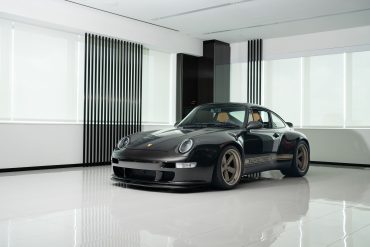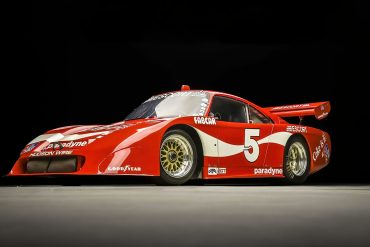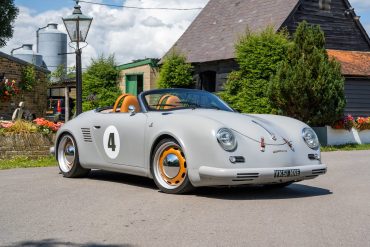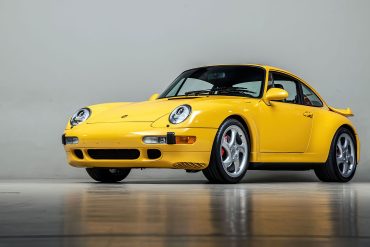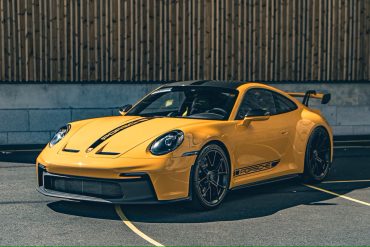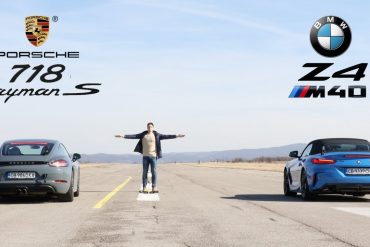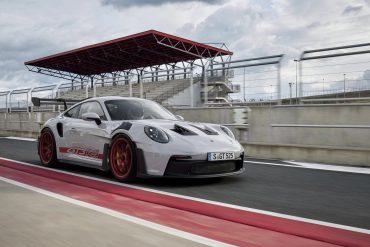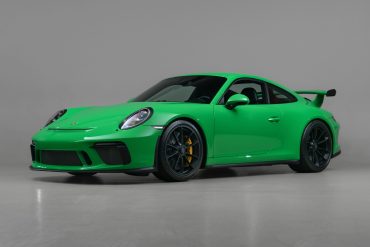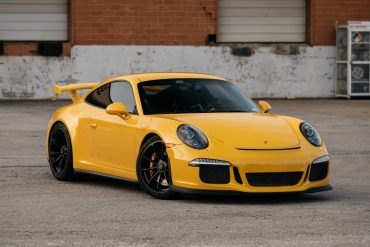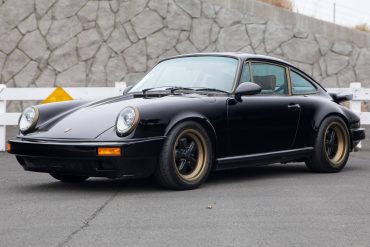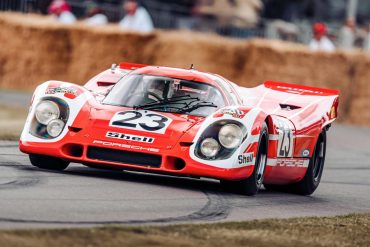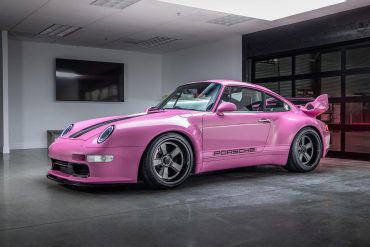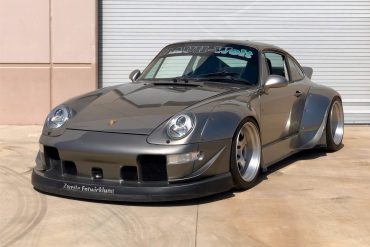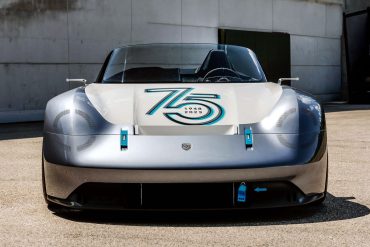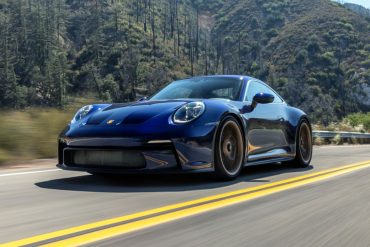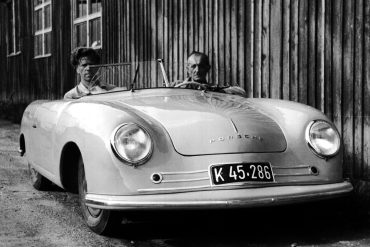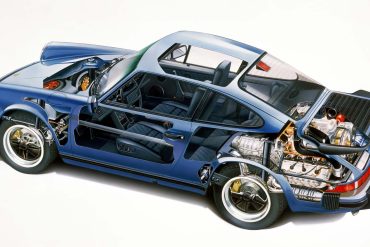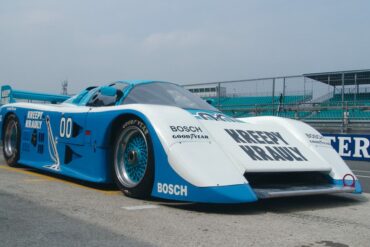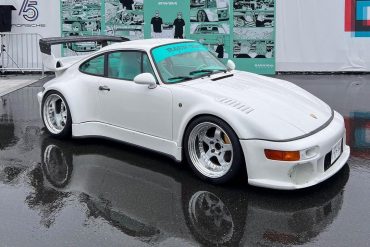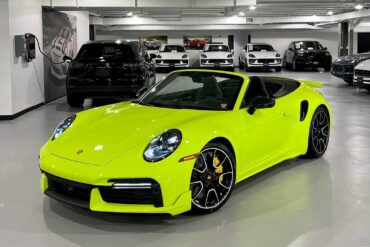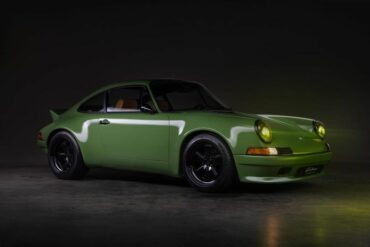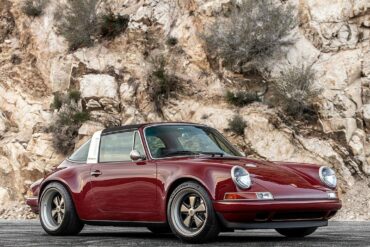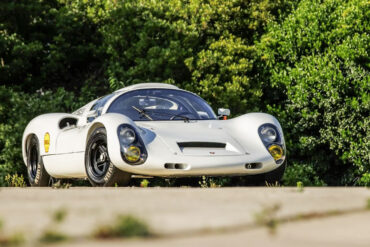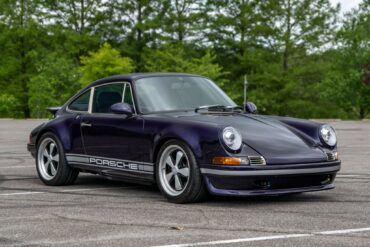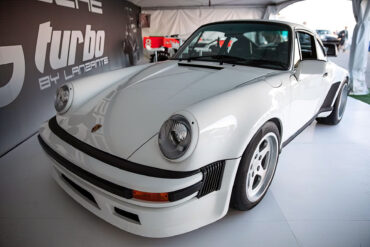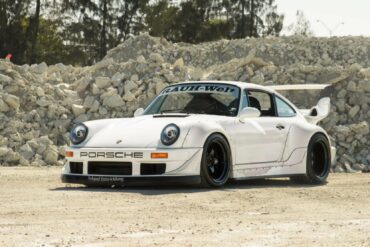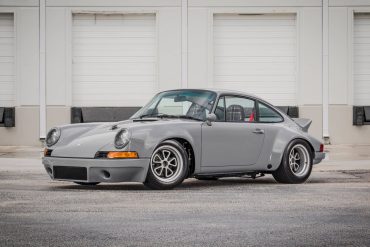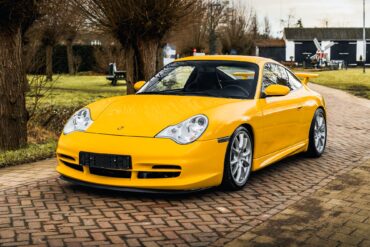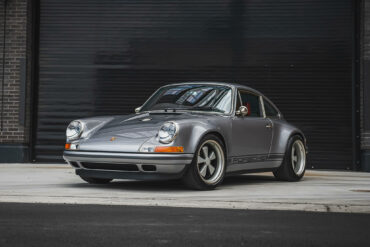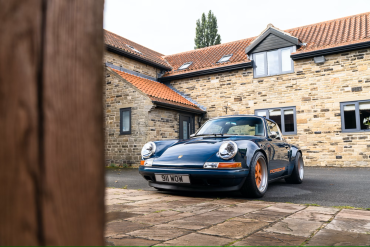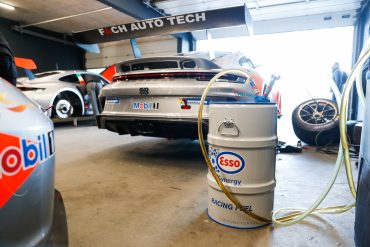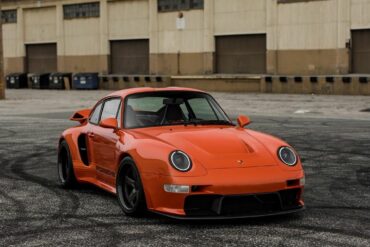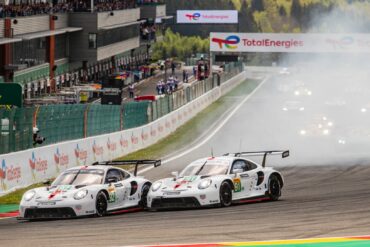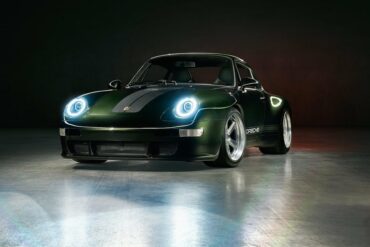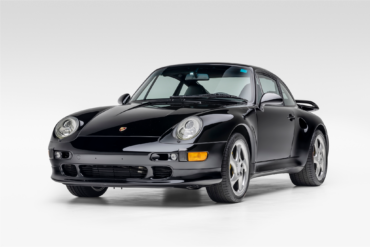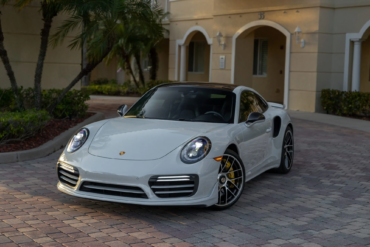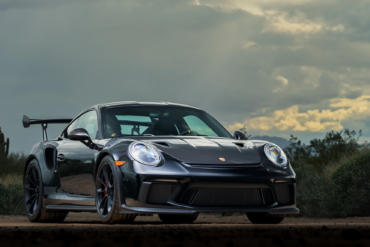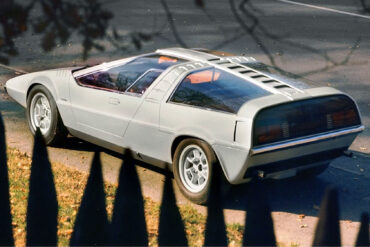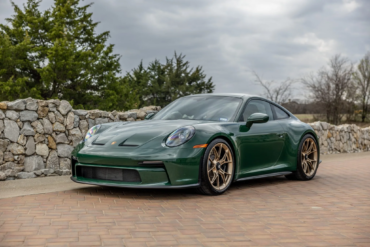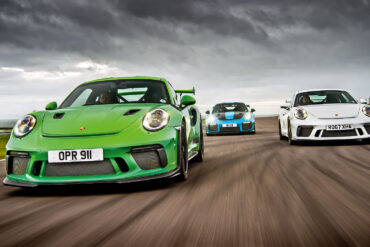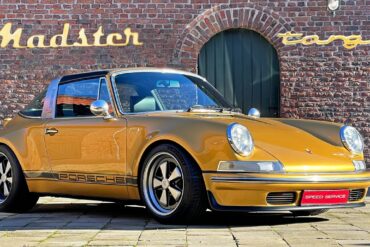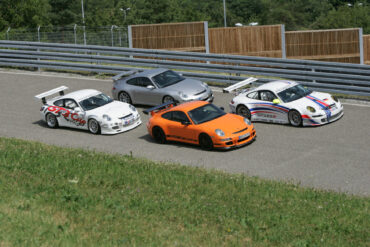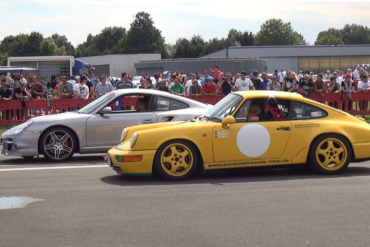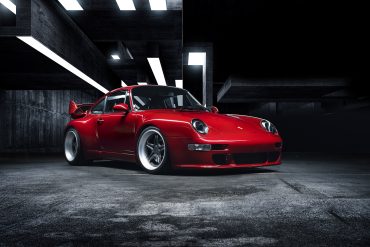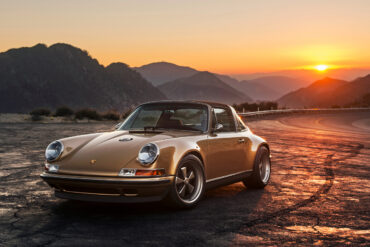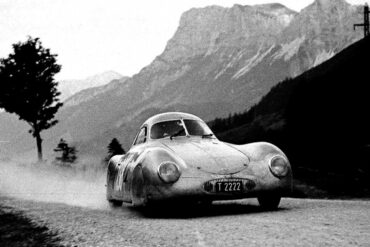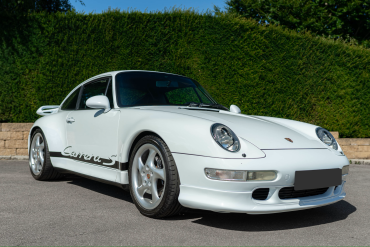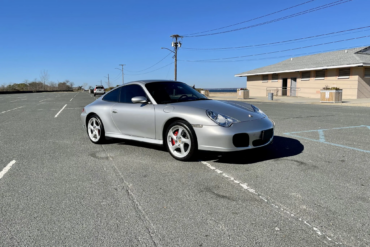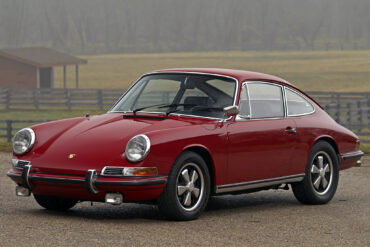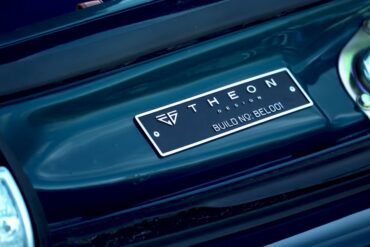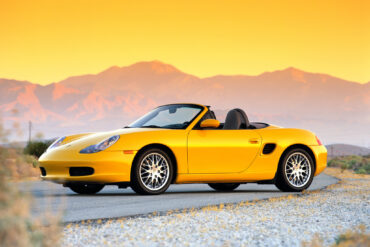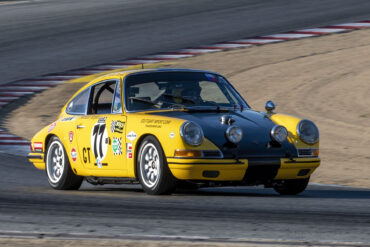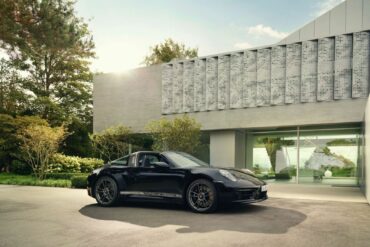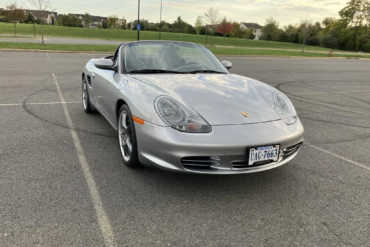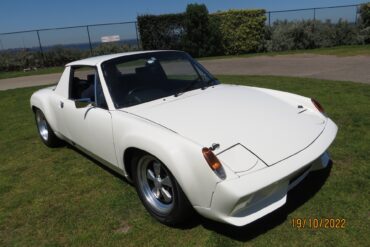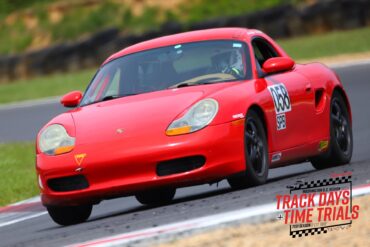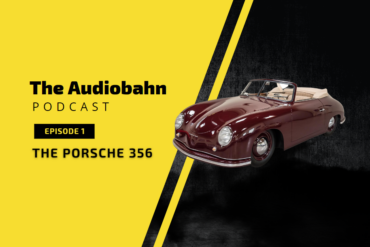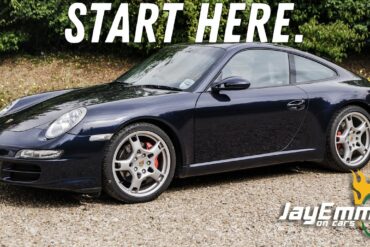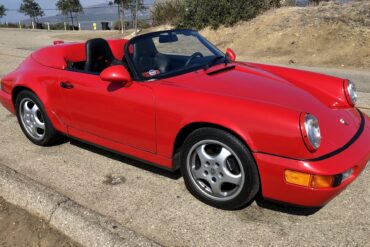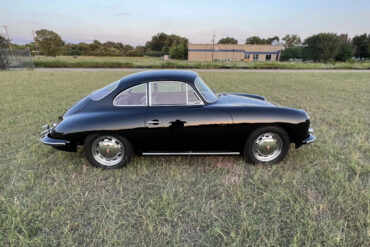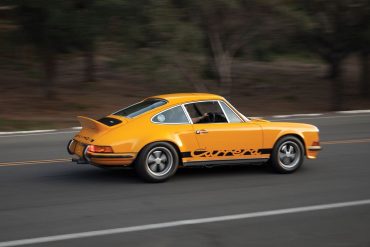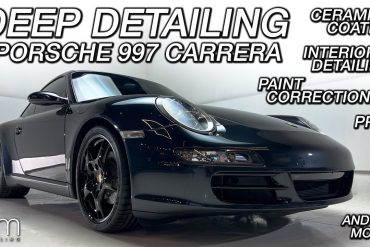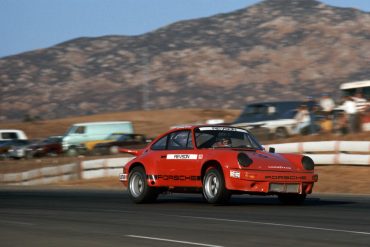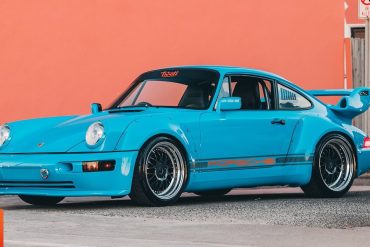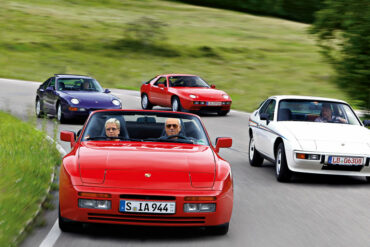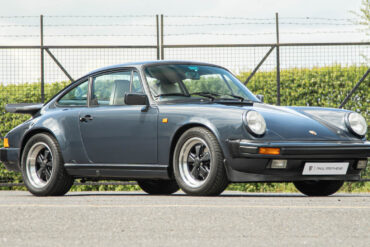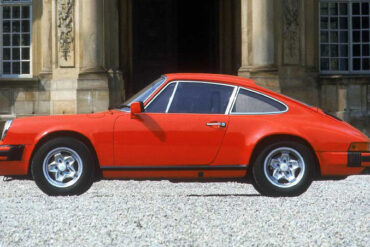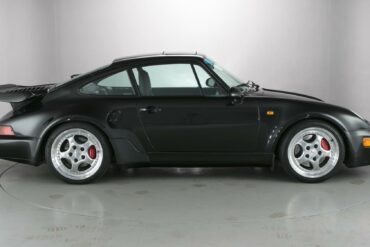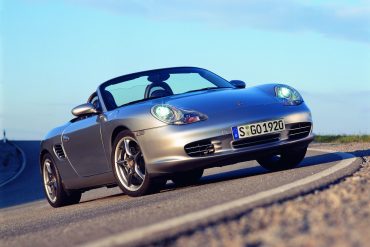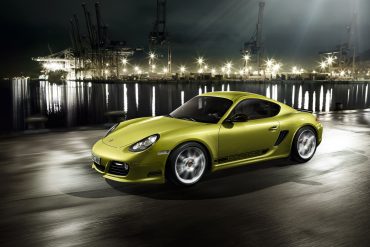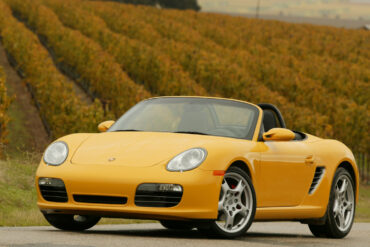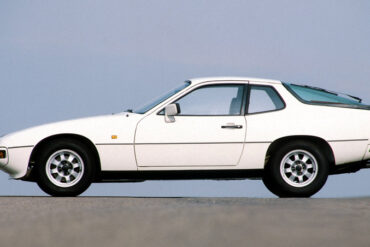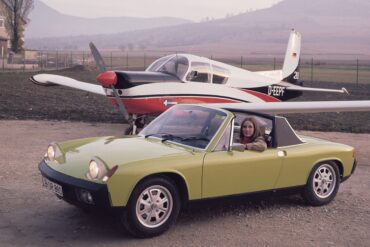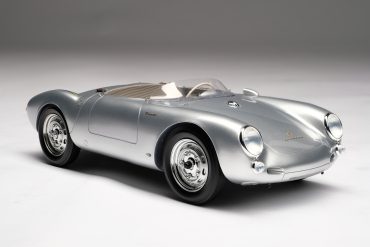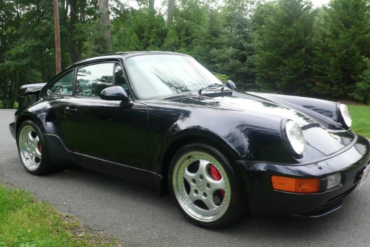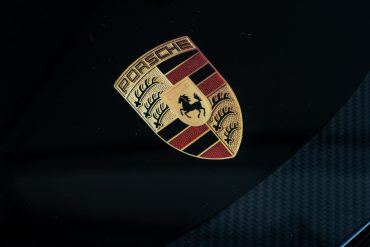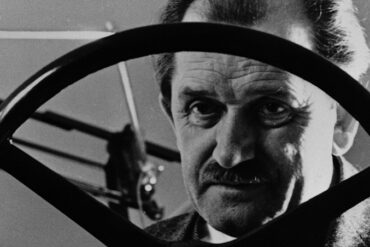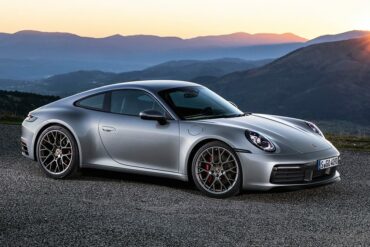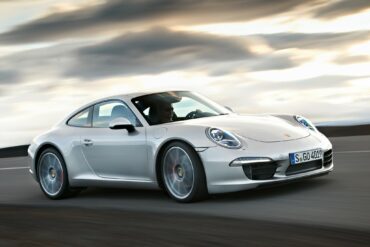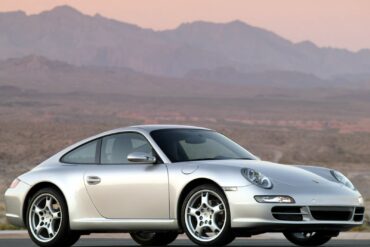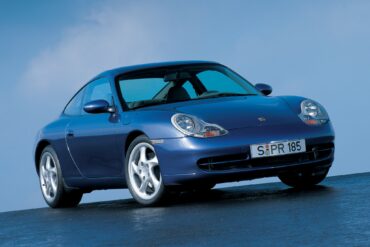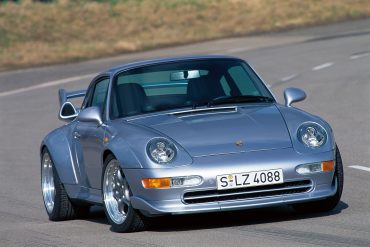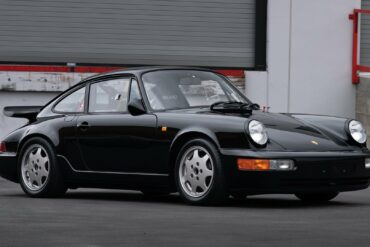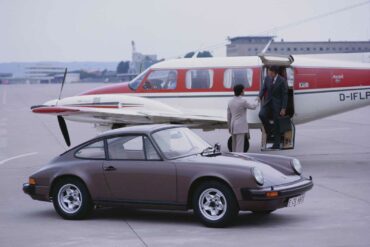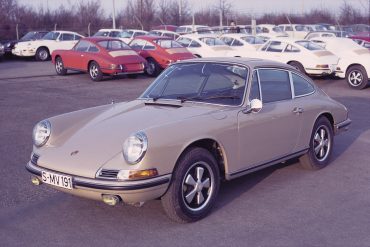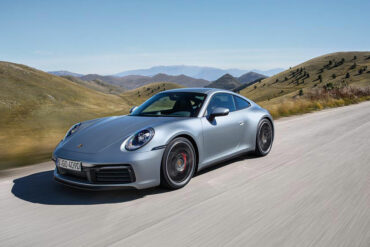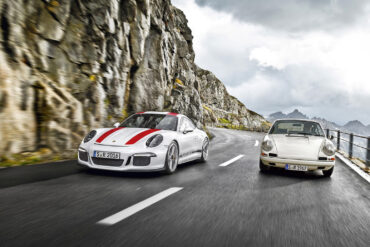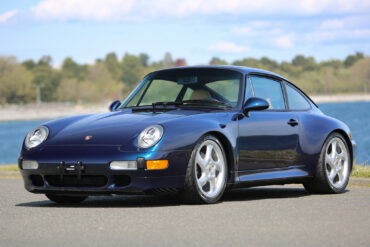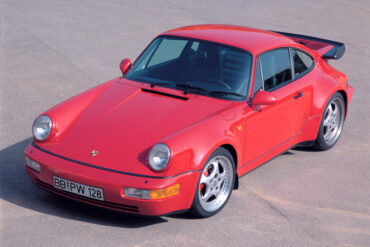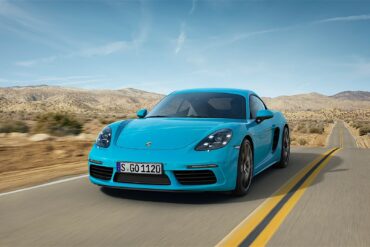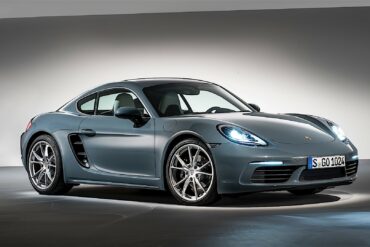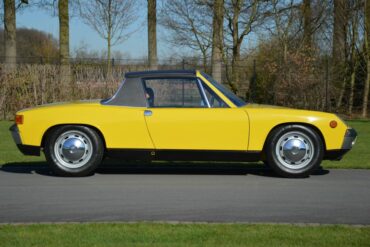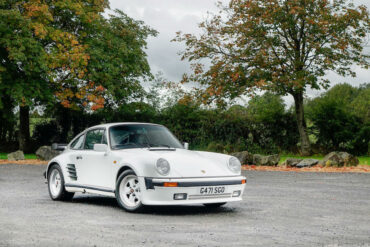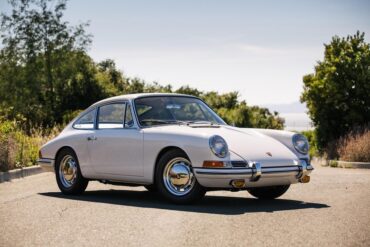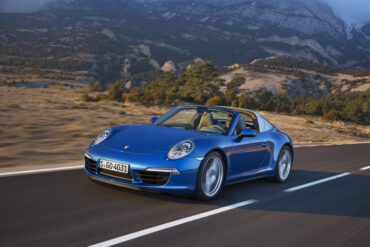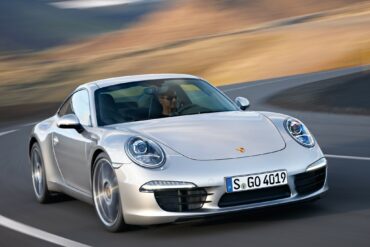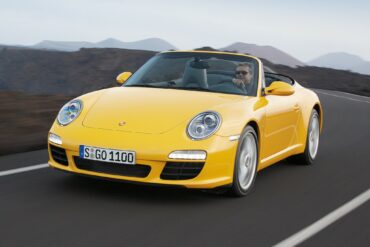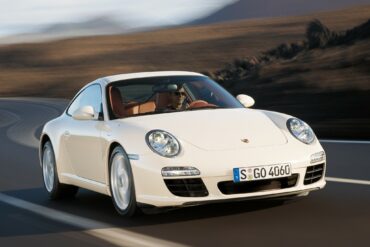The 993-generation 1997 Porsche 911 Remastered by Gunther Werks stands as a sports car that continues to captivate even more...
238 results for
porsche research hub
On the list of most intoxicating objects in the history of collecting, Porsche racing cars are certainly near the top....
The Iconic Autobody 386 Speedster Homage pays a handsome tribute to the legendary Porsche 356 Speedster, built on the well-regarded...
The Porsche 911, the undisputed king of sports car evolution, has continued to be transformed since its 1963 debut. One...
A beautiful and low mileage example of a 2022 Porsche 911 GT3 Clubsport is currently available for auction on Collecting...
In this video from Cars with Pilot Tseno YouTube Channel, we got to see a Porsche 718 Cayman S and BMW...
News dropped today that Porsche’s iconic 911 model series will be the only cars to come from Stuttgart after 2030....
The 991.2 generation of Porsche’s 911 GT3 marked a significant improvement over its predecessor, incorporating several desirable changes. Responding to...
Porsche introduced the 991 GT3 for the 2014 model year, as follow up to the multiple 997 GT3 variants. The...
The “Carbon Noire Commission” is a remastered version of the 911s based on the 933-generation by Gunther Werks. The car’s...
This 1978 Porsche 911 Outlaw showcases a high-quality custom finish and a powerful 993 3.6L engine, delivering both visual excitement...
Porsche honored As the honored marque of this year’s Festival of Speed the sportscar manufacturer showed off with different actions....
Gunther Werks, a California-based Porsche specialist, has unveiled an awe-inspiring restomod of the Porsche 911 (993) at the esteemed Goodwood...
Featured here is a 1995 Porsche 993 that has undergone the highly coveted RWB (Rauh-Welt Begriff) conversion package, resulting in...
Porsche Vision 357 Goodwood debut Celebrating three decades of the renowned Goodwood Festival of Speed, Porsche presents the Porsche Vision...
Porsche records a significant increase in sales Just announced by Porsche, the first six months of 2023 ended successfully with...
Sorry, but you do not have permission to view this content....
History Long regarded as the best entry-level air-cooled 911, the Carrera 3.2 remains highly desirable. It was the final evolution...
I couldn’t quite pinpoint why, during the research and writing of this profile, that I kept hearing the Lennon/McCartney hit...
Akira Nakai and Daniel Arsham are renowned figures in the realm of automotive artistry, especially when it comes to Porsche...
The 2022 Porsche 911 Turbo S Cabriolet is a formidable beast. The new Turbo S comes with an all-new, 3.8...
Commissioned for ‘Mr. Le Mans’ Tom Kristensen, the Kalmar 7-97 is an homage to the Danish driver’s inaugural Le Mans...
The Glasgow Commission, reimagined by Singer, is based on a right-hand drive 964 Targa. The car showcases carbon fiber bodywork...
It only happens once in a lifetime; your 75th birthday. This June 8th marks Porsche’s 75th anniversary so Bring-a-Trailer auction...
Live now on PCARMARKET is a Canadian-market 1992 Porsche 964 Carrera 2 Coupe that was commissioned as a one-of-a-kind backdate...
The 7-figure 911 will solve all of life’s problems Many of us, including myself, continue to watch in disbelief as...
Akira Nakai, the renowned customizer behind RWB (Rauh-Welt Begriff) Porsches, is responsible for creating some of the world’s most iconic...
This 1970 Porsche 911 is a one-of-a-kind creation commissioned by Orbit Racing for a complete RSR/outlaw-style restoration, resulting in an...
Featured here is a a supercharged 996-generation 911, built by famed Porsche tuner RUF. The R Kompressor is based on...
Singer Vehicle Design built the “Greenwich Commission” between 2017 and 2019 as their 109th project. This customized 911 is based...
This remarkable 911 is a bespoke sports car, crafted by Singer Vehicle Design, and is one of the few Targa...
Around a year ago, we wrote an article about the future of Porsche powertrains, covering full electric, hybrid, and sustainable...
Gunther Werks’ latest creation, Project Tornado, is a road-legal coupe that follows the company’s tradition of building models around the...
If there is one thing that can be said about those who are enthusiastic about, or even own, a car...
Gunther Werks Dunkelgrun Commission – one of 25 remastered 993-generation 911s the custom shop will build. Photos by Gunther Werks...
In 1997, Porsche produced a limited factory-production run of what is the last air-cooled 911 Turbo, the 993 Turbo S....
Bring A Trailer is currently offering a low mileage example of a 2019 Porsche 911 Turbo S Coupe finished in...
Bring A Trailer is currently offering a low mileage and eye-catching example of Porsche’s 991.2 generation track-focused supercar that also...
Porsche, as we all know, is a name that is synonymous with clean, simple lines that highlight the peak of...
Live on Bring A Trailer is a 2022 Porsche 911 GT3 Touring is finished in paint-to-sample British Racing Green with only...
Let’s talk about Porsche GT cars—the modern production cars in particular. On the 911 spectrum, this would encompass any of...
The folks at AutoTopNL managed to get their hands on a beautiful Porsche 964 Targa restomod built by Speed Service,...
Overview The GT3s are the low volume 911s, road-going production cars homologated for what was Group 3 competition. The original...
Quarter mile drag race between the air-cooled Porsche 964 RS versus a 911 Turbo from the 997-generation....
The Gunther Werks 400R is a modern version of Porsche’s last air-cooled 911 and is the first car from the...
This was the first 911 Targa to came out of the Singer factory. It is a magnificent piece of machine...
Story by Karl Ludvigsen Creating his own car company was “an old idea of my father’s,” Ferry Porsche recalled. The...
Collecting Cars is currently offering a well-maintained and highly original 1997 Porsche 911 (993) Carrera S. This example is finished...
In 2002, the entire generation of the 996 was facelifted. The Carrera 4S was introduced and got the new engine...
The 911 S was introduced to increase the performance potential of the very successful 911. It had a more powerful...
Autocar reviews a 964-generation Porsche 911 which has been modified by Theon Design, a firm based in Oxfordshire. Find out...
The Boxster was initially unveiled as a concept in 1993 at the Detroit Auto Show, before going on sale in...
By Rex McAfee Best of the Best: Weathertech Raceway, Laguna Seca, CA. Returning to the iconic Monterey Peninsula, the 2022...
If there is one thing the Germans do better than almost anyone else in the world, it’s having a knack...
In 2004, the Boxster S Special Edition, also called 550 Spyder Boxster S Special Edition was introduced. To celebrate the...
Let’s face it, the Porsche 914 was not the most iconic of sports cars in the storied history of the...
If there is one thing that Porsche does better than pretty much any other car manufacturer, that is providing their...
Episode One: The Porsche 356 Summary Welcome to The Audiobahn, the Stuttcars.com podcast focused on all things Porsche. In our first...
A Few Reasons Why a 997.1 Carrera May Be the Best 911 for a First Time Buyer With prices softening...
Note: Some images from this article provided by Roger Katz. The Type 964 Porsche 911 was a revolutionary car when...
Some pretty interesting Porsches are currently being offered at Bring A Trailer at No Reserve: a 1964 Porsche 356C Coupe,...
Imagine, if you will, that you are in Paris, France, in October 1972. There is an automobile show, a fairly...
Porsche 997 Carrera gets THE WORKS! Paint Correction, Ceramic Coating, PPF I have a confession to make. I like to...
The premise was disarmingly simple: a race bringing together the best drivers in motorsport, all competing in identical cars, in...
We stumbled on this pretty cool video of a Porsche 964 transformation and loved it. It is a sped up...
Everybody knows we are huge fans of the Porsche 997, but if you were shopping for one today, which one...
Porsche 924 / 928 / 944 / 968 The Ultimate Model Guide to Porsche’s Transaxle Models The Research Hubs / 924 Model...
The replacement for the SC series came in 1984 as the 911 3.2 Carrera, reviving the Carrera name for the first time since 1977. This was the last iteration in the original 911 series, with all subsequent models featuring new body styling and new brake, electronic, and suspension technologies. Almost the same galvanised body as the SC. Engine was claimed to be 80 per cent new, and the first production 911 to feature an ECU to control the ignition and fuel systems.
Porsche 911 (G-Series) (1973 – 1989) Story & History G-Model – The 2nd Generation Porsche 911 Premiere: September 12, 1973...
The Porsche factory had 93 Turbo chassis left. These were all transferred to Porsche Exclusiv and hand built as the very special 964 Turbo 3.6 S. They were offered with normal, or ‘Flachbau’ slant nose front ends. While the vast majority of Turbo S’ were fitted with the ‘Flachbau’ nose as a no-cost option, the Turbo S could also be had with the traditional 964 nose as well. In all, 76 Flatnose cars were made while 17 non-Flatnose (known as Package option) cars were made. These cars were also fitted with the X88 option, which increased power to 380 hp. 75 flatnose units were produced.
In 2004, the Boxster S Special Edition, also called 550 Spyder Boxster S Special Edition was introduced with a production run of just 1,953 cars (paying homage to the 550 Spyder's year of introduction). 500 cars were made for the US Market. These were all painted in GT Silver Metallic, the same colour as the Carrera GT concept presented in 2000, and had unique cocoa-brown full-leather interior as standard with grey natural leather as a no-cost option.
Porsche Cayman (987) The Ultimate Model Guide 2nd Generation Porsche Cayman (2007 – 2012) The Story / Timeline / Model Guides / Performance & Specs / Data &...
Porsche Boxster (987) The Ultimate Model Guide 2nd Generation Porsche Boxster (2005 – 2012) The Story / Timeline / Model Guides / Performance & Specs / Data &...
Porsche 924 History & Story The Porsche 924 emerged as the result of a Volkswagen engineering order which did not...
Porsche 914 History & Story Porsche needed an entry-level car to replace the 912 and Volkswagen needed a sports car...
Porsche 550 Spyder Chassis Numbers & Stories Chassis #550-0016 to #550-0090 One year before Porsche started production of the legendary...
19 non 'slant nose' or Package cars were made for the USA only. Very rare. The Porsche factory had 93 Turbo chassis left. These were all transferred to Porsche Exclusiv and hand built as the very special 964 Turbo 3.6 S. They were offered with normal, or ‘Flachbau’ slant nose front ends. While the vast majority of Turbo S’ were fitted with the ‘Flachbau’ nose as a no-cost option, the Turbo S could also be had with the traditional 964 nose as well. In all, 76 Flatnose cars were made while 17 non-Flatnose (known as Package option) cars were made. These cars were also fitted with the X88 option, which increased power to 380 hp.
The Story of The Porsche Crest As Germany underwent a revolution in 1918, a German state of Kingdom of Württemberg...
Ferdinand Porsche (1875 – 1951) Ferdinand Porsche was an Austrian-German automotive engineer and founder of the Porsche car company. He...
Porsche 911 (992) The Ultimate Model Guide 8th Generation Porsche 911 (2020 – Present) The Story / Model Guides / Performance & Specs / Data &...
Porsche 911 (991) The Ultimate Model Guide 7th Generation Porsche 911 (2012 – 2019) The Story / Details / Model Guides / Performance & Specs / Data &...
Porsche 911 (997) The Ultimate Model Guide 6th Generation Porsche 911 (2005 – 2013) This is your center for all...
Porsche 911 (996) The Ultimate Model Guide 5th Generation Porsche 911 (1998 – 2005) The Story / Buyers Guide / Timeline / Details / Model Guides / Performance &...
Porsche 911 (993) The Ultimate Model Guide 4th Generation Porsche 911 (1994 – 1998) The Story / Timeline / Details / Model Guides / Performance & Specs / Data &...
Porsche 911 (964) The Ultimate Model Guide 3rd Generation Porsche 911 (1989 – 1994) The Story / Timeline / Details / Model Guides / Performance & Specs / Data &...
Porsche 911 (G-Series) The Ultimate Model Guide 2nd Generation Porsche 911 (1974 – 1989) The Story / Timeline / Details / Model Guides / Performance & Specs / Data &...
Porsche 911 (Classic) The Ultimate Model Guide 1st Generation Porsche 911 (1964 – 1973) The Story / Timeline / Details / Model Guides / Performance & Specs / Data &...
If the base 911 coupe doesn't do it for you, maybe the Carrera S coupe gets you over the line. For about $20k more, you get more horsepower, torque vectoring and bigger wheels. The Carrera S uses a version of the 3.0L twin-turbo flat-6 that generates 443 hp and 390 lb-ft of torque. Torque vectoring allows different amounts of torque to be distributed between drive wheels on the same axle. This means the inside wheel can turn slower than the outside wheel for improved cornering.
The All Time Greats – 70 Best Porsches of All Time (Ultimate List) Clearly we have been a bit of...
Porsche has made a lot of cracking 911s over 50+ years. We Pick the Best Production, Limited Edition & Race...
The 1989/90 change of model year saw the launch of the Porsche 911, 964 series onto the market. This 911 model was initially available as a Coupe, Targa and Convertible. From model year 1991 onwards Porsche also introduced its top-of-the-line model - the Turbo - into this series. In spite of bearing a major similarity in terms of look to the naturally-aspirated model, the extended wings remained. This meant that the new Porsche could retain its turbo look. The 964 Turbo model was the successor to the Porsche 930. The 964 Turbo was the end of an era, the last of the single turbo rear-wheel drive 911 Turbos.
Searching for more muscle? The 718 Cayman S got a new 2.5L turbocharged boxer 4-cylinder. Power comes in at 345 bhp @ 6500 rpm and torque is a really strong 310 ft lbs @ 1900 rpm. For reference, the outgoing 981 Cayman S had 311 bhp and 265 ft lbs of torque. While we hate the drone of the turbo four cylinder, there is absolutely no doubt that is much more powerful and that performance numbers are much stronger. 0 – 60 mph is over in just 4.0 seconds and the quarter mile is finished in 11.9 seconds flat. Much faster than the outgoing model. But is it as engaging? No.
With the 982-generation Boxster/Cayman platform, Porsche went back in time to pull out the 718 name, a reminder that the sports car maker has been doing the small sports car thing for a long time. The 718 of course, is diminutive race car that won the Targa Florio race in 1959 and 1960. The marketing stunt was meant to evoke these past Porsche racing successes with light cars like the 718 that outmaneuvered competitors with larger and more powerful engines. The reason? Porsche got rid of the naturally aspirated flat-6 engines and instead would now have flat-4 turbocharged engines.
The Porsche 914 was first shown at the 1969 Frankfurt Auto Show was, as intended, a true conglomeration. The front suspension was largely derived from the 911 with some VW components, and the interior was a blend of both companies' parts bins. The initial engine offering was Volkswagen's 80-hp fuel-injected 1.7 liter flat four, while the 914/6 had a twin-carburetor 2.0-liter Porsche flat six tuned for 125 hp.
Only 50 units made. The 911 Turbo Limited Edition comes equipped with the 330 bhp power unit normally only available in the 911 Turbo with Sport Equipment. In addition, the fitment of a limited slip differential as standard ensures the the increased engine performance can be used to it’s fullest extent. This Limited Edition also adopts the rear wheel air intakes of the Sport Equipment version. Essentially an SE without a slantnose front.
The first generation of the Porsche 911 begins in late 1964 and goes through 1968. The "base" model was an instant hit. During this period, Porsche would make continuous improvements and tweaks to the body, to its short wheelbase (SWB) chassis, and to its 2.0 liter flat six engine. Model year 1968 would be the last for the early 911, a transition that would begin with the introduction of the higher output 911S in 1967, followed by the 911L and a new entry level 911T in 1968, and finally, the 911E in 1969. The base 911 was available as both a Coupe and Targa (starting in '67).
For this 991 generation Targa, Porsche went back to the original Targa concept, albeit with an even sexier design and some very cool technical tricks to boot. Porsche wanted to resurrect its classic design, but the company feared that owners would not want to get out of the car, lift off the roof panel, and stow it in the trunk. The other issue was, in the words of 911 product line director Dr. Erhard Mossle, "that the manual solution was a little bit old-fashioned." The 911 Targa 4 gets the same 350 horsepower, 3.4-liter six-cylinder motor as its hardtop siblings.
The 991 Carrera S continued the time honored Porsche 911 tradition of growing in physical size and power. Over the years the 911 has continued its evolution from a pure sports car to a luxurious super-car and the 2012 Carrera S Coupe was no exception. The seventh generation 911 launched in 2012 and it sits on a new platform, with a longer wheelbase and shorter overhangs. It also featured new headlights and taillights. Features a 3.8-liter flat-six engine mated as standard to a world's first seven-speed manual transmission.
The 911 Carrera Cabriolet is a true Porsche, from top to bottom. Like the rest of the range, the base Cabriolet got a mild refresh in terms of design that made it more modern and a little more crisp. The engine was upgraded, now with direct direction. The direct-injection 3.6-liter engine also got new air filters, a more free-flowing exhaust system, and reduced engine friction, making it more powerful than before. It has peak power of 339 bhp @ 6500 rpm and torque of 287 ft lbs @ 4400 rpm. The Carrera equipped with PDK covers 0-60 mph in 4.5 seconds and runs to a top speed of 179 mph.
Porsche refers to it as a new generation, even though the internal chassis code 997 remains unchanged. The 997.2 therefore is more of a mid-term facelift with some significant technological changes. Notably, the water-cooled flat-six engines get direct-injection technology, and a seven-speed, dual-clutch transmission replaces the previous five-speed Tiptronic automatic while the shift-it-yourself option remains a six-speed. Base Carrera coupe gets 339 bhp and 287 ft lbs and a 0.3 second faster 0 - 60 mph time of 4.5 seconds. Top speed now 179 mph. A nice update indeed.


